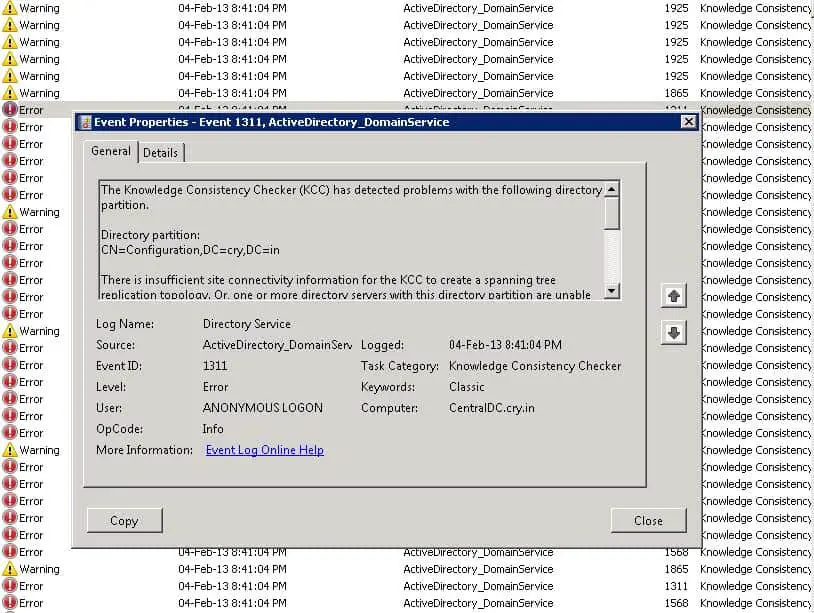Definition of Knowledge Consistency Checker (KCC) in The Network Encyclopedia.
What is KCC (Knowledge Consistency Checker)?
KCC is a utility built into the Exchange directory service of Microsoft Exchange Server that ensures consistency within the directory database. The Knowledge Consistency Checker (KCC) automatically checks for directory consistency throughout an Exchange site every three hours, or whenever you modify the directory, to ensure that the directory database is consistent throughout your Exchange organization.
If the directories do not match, the KCC initiates directory replication to correct the inconsistencies. The KCC is also involved in replicating directory information between sites.
You can force the KCC manually using the Directory Service object in the Exchange directory hierarchy. This causes all the directories in your Exchange organization to be checked for consistency with one another. You might want to force the KCC to run if you have added new servers to other sites and want to update this information in the directory of your own site, or if you suspect that errors have occurred during directory replication.

NOTE
Active Directory in Microsoft Windows 2000 uses a similar KCC tool for controlling directory replication between domain controllers within a site. The Active Directory KCC logically links a site’s domain controllers to a ring topology, which defines the paths that directory updates use to travel from one domain controller to another.
The KCC does this by creating connection objects that represent a unidirectional path from one domain controller to another. These connection objects are located in the NTDS Settings folder, which is in the Active Directory Sites and Services administrative tool. Administrators can also create additional intrasite or intersite connection objects for controlling directory replication, but it is often better to let the KCC do this automatically to ensure better performance.
The ring topology generated by the KCC ensures a minimum of two replication paths between domain controllers so that if one domain controller is down, replication can continue. In this topology, a directory replication update travels from one domain controller to any other domain controller in the same site in three or fewer “hops.” When a domain controller is added to or removed from a site, the KCC generates a new topology.
TIP
Don’t confuse the KCC of the Directory Service object with the DS/IS Consistency Adjuster of the Server object! Running the DS/IS Consistency Adjuster carelessly can yield unexpected results such as rehomed public folders.